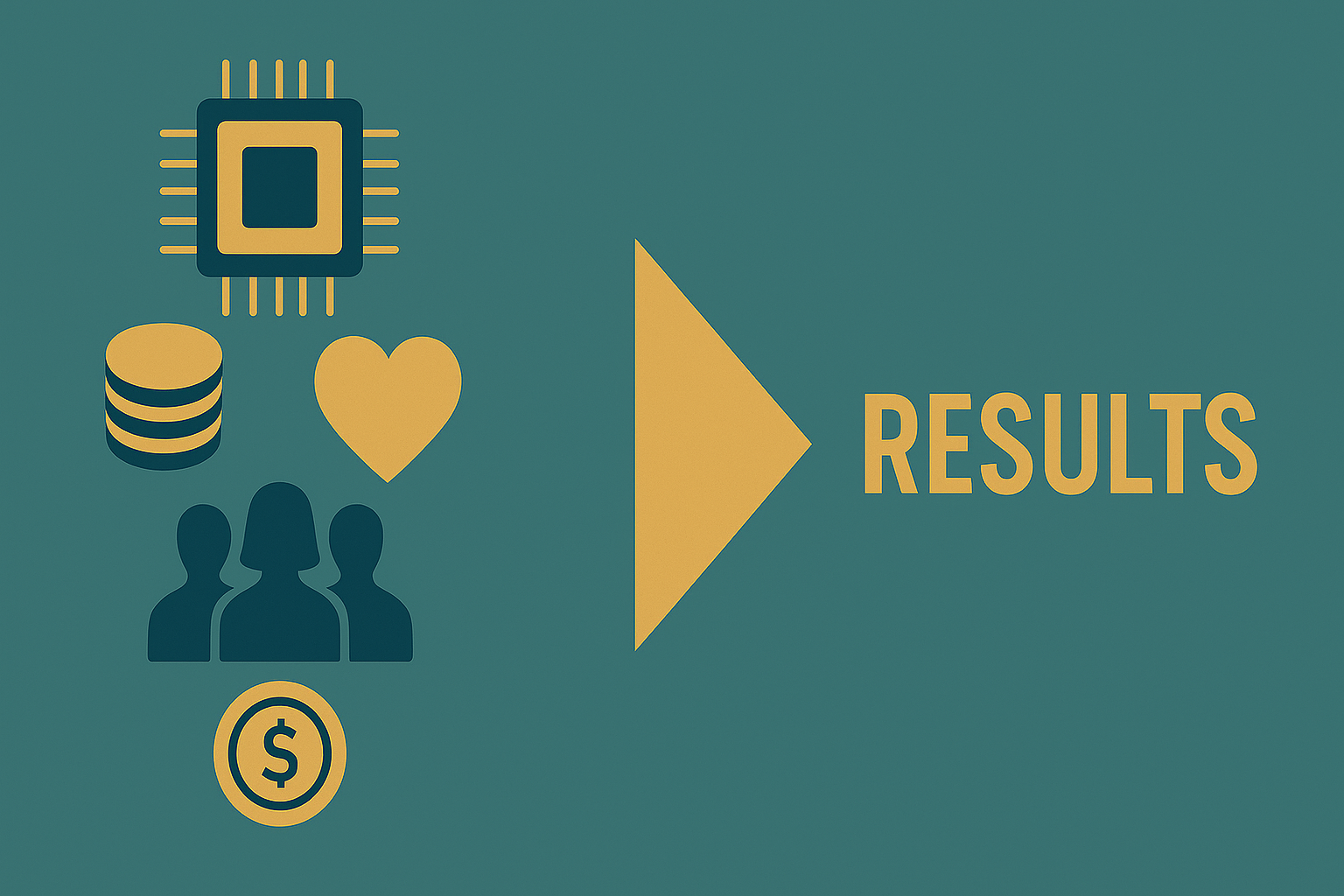 This chapter presents a simple
framework for understanding how the
four capitals—material,
intellectual, social, and spiritual—shape results at three
levels: individual,
organizational,
and national.
The focus is on relationships and balance. Outcomes improve when
the capitals complement one another; overemphasis on a single
capital often creates new problems.
This chapter presents a simple
framework for understanding how the
four capitals—material,
intellectual, social, and spiritual—shape results at three
levels: individual,
organizational,
and national.
The focus is on relationships and balance. Outcomes improve when
the capitals complement one another; overemphasis on a single
capital often creates new problems.
Individual Level
• Material capital:
personal finances, basic resources, and physical well-being
provide security and room for choice. Money matters—but alone it
can lead to a one-dimensional life.
• Intellectual capital:
education, skills, creativity, and lifelong learning support
problem-solving and adaptability in a changing world. Digital
literacy and practical know-how are part of this.
• Social capital:
relationships, trust, and community involvement foster belonging
and opportunity. Networks help people find jobs, receive help,
and contribute to others.
•
Spiritual capital:
values, purpose, and ethical conduct guide choices and build
resilience. For believers, it can be connectedness with God; for
others, commitment to noble purposes and moral standards. When
values shape habits, they become usable capital.
Organizational Level
• Material capital:
funding, facilities, equipment, and reliable infrastructure
enable operations and growth. Resilient supply chains and energy
systems are part of today’s foundation.
• Intellectual
capital: collective know-how, processes, data,
software, and protected IP drive innovation and quality.
Learning cultures turn ideas into improvements.
• Social capital:
culture, trust, and stakeholder relationships support
collaboration, engagement, and loyalty. Reputation and
partnerships reduce friction and speed coordination.
• Spiritual capital:
purpose, values, and ethical practices shape decisions and
sustain integrity. Clear mission and responsibility to society
strengthen long-term performance.
National Level
• Material capital:
economic resources, physical and digital infrastructure, and
natural assets support stability and growth. Stewardship of
land, water, energy, and critical infrastructures matters.
• Intellectual
capital: education systems, research capability, and
technological development fuel competitiveness and innovation.
Talent development and knowledge transfer are essential.
• Social capital:
strong civic institutions, norms of reciprocity, and bridging
networks enable effective governance and social cohesion. Trust
lowers the cost of collective action.
• Spiritual capital:
cultural heritage, shared values, and ethical norms contribute
to identity, unity, and responsible leadership. They help align
power with the common good.
Putting it together
Performance and well-being do not come from material resources
alone. They arise from a
balanced interplay
of the four capitals. Material invests in capability;
intellectual turns ideas into action; social enables
cooperation; spiritual keeps direction and conduct aligned with
worthy goals. This balance supports innovation, resilience,
legitimacy, and shared progress.
Conclusion
The 4Capital framework helps explain results across people,
organizations, and nations. It emphasizes complementarity over
silos and long-term capability over short-term gains.
Cultivating all four capitals together strengthens life
satisfaction, organizational performance, and national
development.